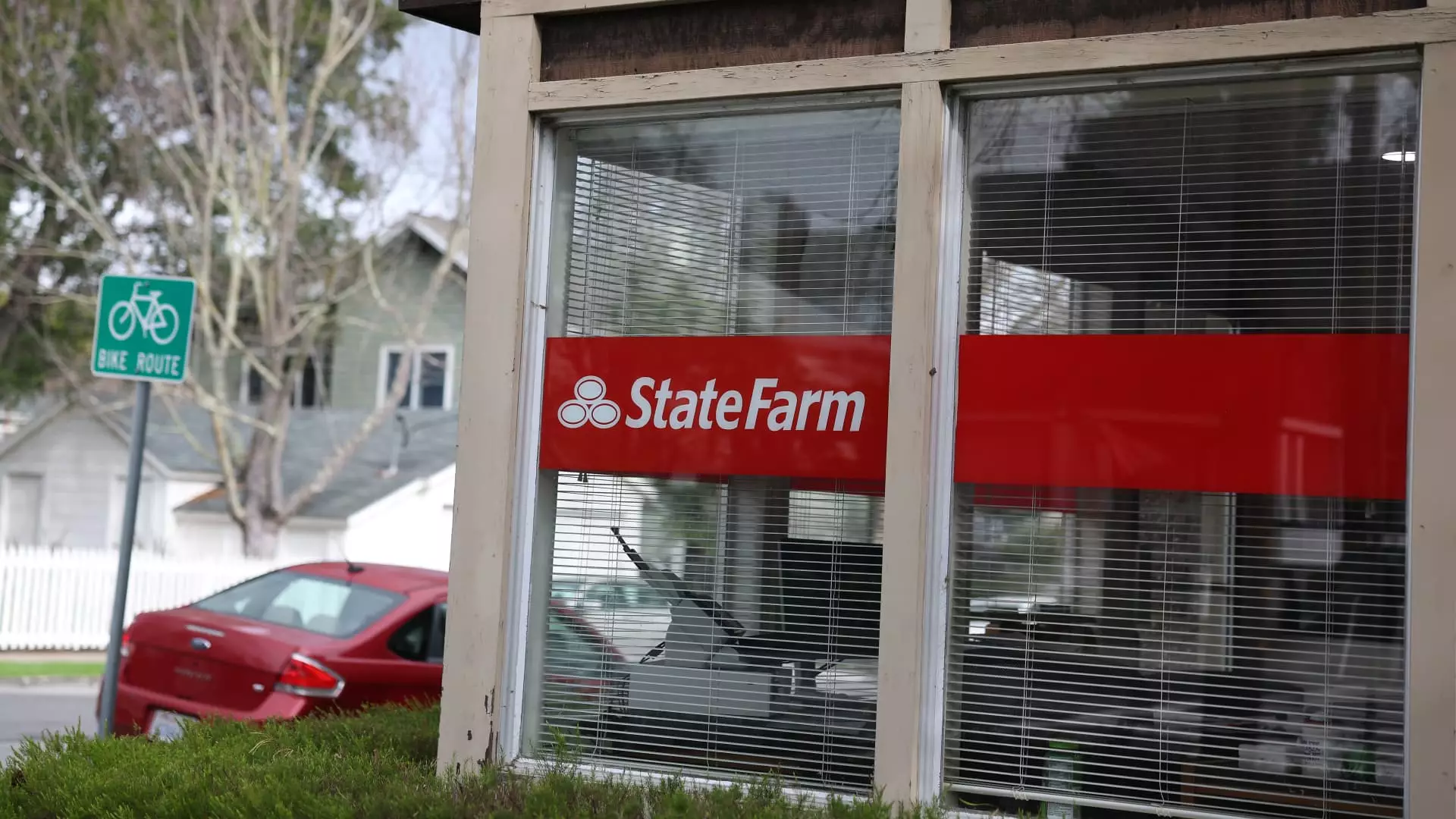In an era where natural disasters are more frequent and severe, the precarious position of California’s largest property insurer, State Farm, raises serious concerns about the viability of home insurance in the state. This week, the company is thrust into the public eye, as it seeks approval for an unprecedented rate hike to counter a financial crisis exacerbated by the recent Los Angeles wildfires. The stakes are high: millions of homeowners depend on State Farm for their financial security, yet the company, beset by losses, is navigating treacherous waters and attempting to stave off disaster for itself and its policyholders.
The challenges that State Farm faces are emblematic of a larger systemic issue affecting insurers in California. The state’s insurance market is not just faltering—it’s unraveling. With the company proposing a substantial hike of 17% on homeowners’ insurance premiums, it introduces a wave of uncertainty. While facing an estimated $2.75 billion in claims related to the wildfires, the necessity for fresh funding to maintain capital becomes a matter of survival. The urgency is mirrored by the dire language used by those involved in the proceedings; one attorney ominously compared the situation to the Titanic, suggesting an impending iceberg that could spell disaster for millions.
The Fallout from the L.A. Wildfires
The October wildfires in Los Angeles serve as a stark reminder that climate-related catastrophes are not just the backdrop of a Hollywood film—they’re an ever-present reality that insurers can no longer afford to overlook. With damages estimated between $250 and $275 billion, this catastrophic event is not merely a blip on the radar; it fundamentally alters the landscape of risk management. The significance of the financial impact cannot be understated: when major insurers struggle, it sends shockwaves through the entire economy.
State Farm’s plight is not isolated; it represents the struggle of an industry grappling with increasing risks and costs. Unable to balance payouts against premiums collected, insurers are being forced to either raise rates or withdraw from the market altogether, leading to a diminishment of coverage. The decision to cease writing new homeowners insurance policies is a telling indicator of an industry grappling with its own sustainability. In a state where 3 million policies are at stake, the repercussions of such corporate strategies can be devastating for ordinary citizens.
A Regulatory Minefield
Transacting business in California has become akin to walking through a regulatory minefield. Insurance Commissioner Ricardo Lara is caught between the pressing need for rate adjustments and the duty to protect consumers from exorbitant costs. Although a framework has been proposed to allow insurers to factor in the real costs of reinsurance and disaster modeling, currently existing regulatory mechanisms appear outdated in addressing the swiftly evolving landscape of risk.
Enter advocacy groups such as Consumer Watchdog, which vehemently oppose State Farm’s bid. Their argument is both poignant and pragmatic: the onus is on insurers to justify any proposed rate increases transparently. If companies cannot defend their need for increased premiums, then the burden falls back on consumers, who must navigate an already precarious financial landscape. Is it ethical to place the financial weight of corporate mismanagement on the very people who contribute to an insurer’s profits?
The Need for Sustainable Solutions
As the insurance crisis continues to unfold, attention must shift to sustainable solutions that can rectify systemic issues instead of merely patching over a gaping wound with superficial fixes. The implementation of California’s “Sustainable Insurance Strategy” is a crucial step. This initiative aims to create a viable framework that aligns insurer practices with the realities of climate change and disaster risk.
Yet, for any strategy to be effective, it must prioritize transparency and accountability. Economists are sounding alarms, stating that without structural reform, the California insurance market—even with rate increases—will remain unsustainable. The challenge is how to execute this transformation without punishing the very homeowners that insurers are meant to protect. Understandably, the pressure on State Farm to stabilize itself through rate hikes is palpable, but it also raises pressing questions about fairness and equity.
In a state already grappling with the fallout of natural disasters, the implications of State Farm’s actions reverberate beyond just economics. They speak to a broader question of responsibility—who bears the burden of change? As discussions unfold over the next few days, the eyes of Californians will remain fixated on Oakland, where decisions will shape the future of home insurance in a rapidly changing world.


Leave a Reply